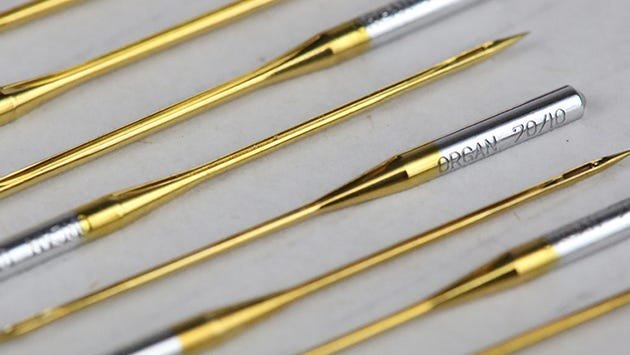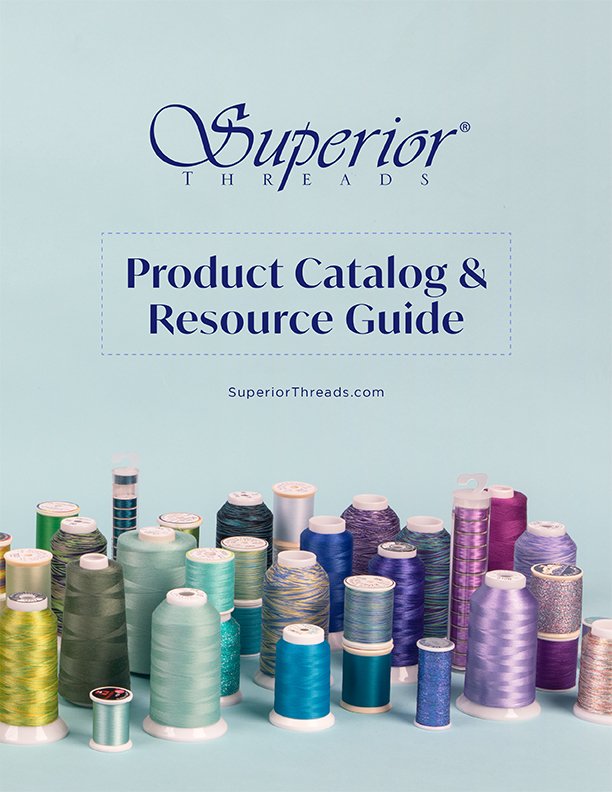Superior Education
TOPSTITCH NEEDLE GUIDE
- HOME MACHINE NEEDLES
- TOPSTITCH
- NEEDLE SHAPE EXPLAINED
The Topstitch needle is our favorite needle to use on our home sewing machine. We use this style for quilting, piecing, sewing, and embroidery. A thin layer of titanium nitride makes the Topstitch needle last up to six times longer than a standard needle, thanks to its ability to resist abrasion.
There are many parts to a needle and the Topstitch needle has several unique traits that do a great job at protecting threads when stitching at high speeds or through many layers of fabric.
Shank
The shank is the part of the needle that is inserted into the sewing machine. The shank is the heaviest part of the needle and is designed to minimize needle movement by attaching it firmly to the needle bar. All home machine needles have a flat shank, while longarm machine needles and industrial needles usually have a round shank.
Shaft
The shaft is the narrow portion of the needle that supports the functional parts of the needle. Needle sizes refer to the diameter of the shaft.
Groove
The groove protects the thread by hiding it within the divot as it passes through the fabric during the stitch creation process. Some needles have exaggerated grooves, like the Topstitch needle, to protect the thread when sewing on particularly dense fabric or at high speeds. A needle that is too fine for the size of thread used will result in inconsistent stitches and broken threads.

Universal needle (top) and Topstitch needle (bottom)

Superior's Topstitch needles are titanium coated
Eye
The eye of the needle is the hole through which thread passes. As the size of the eye increases, the size of the shaft increases to support it.
Point
The point of the needle is a primary distinguishing feature in needles. Points can be sharp or ball, or a hybrid of both. The angle of the point can be slender or acute. The point can be centered or eccentric. All are designed for a specific purpose and all give the operator unique applications. The Topstitch needle has a rounded sharp point and can be used on both woven and knit fabrics.
Scarf
The scarf is the cut away portion on the back of the needle just above the eye. This area accommodates the bobbin hook mechanism as it rotates past the needle to engage the thread loop formed by the lifting needle. The shape and position of the scarf increases the consistency of stitching with various threads and fabrics.
We choose the needle size based on the thread weight (thickness):
- Very fine needles (# 60/8 and #70/10) for very fine threads such as 100 wt. or 60 wt. threads.
- Fine needles (#80/12) for fine threads such as 50 wt. threads.
- Medium needles (#90/14) for medium threads such as 40 wt. threads.
- Large needles (#100/16) for heavier threads such as 30 wt. and heavier threads.

 View Our Product Catalog
View Our Product Catalog